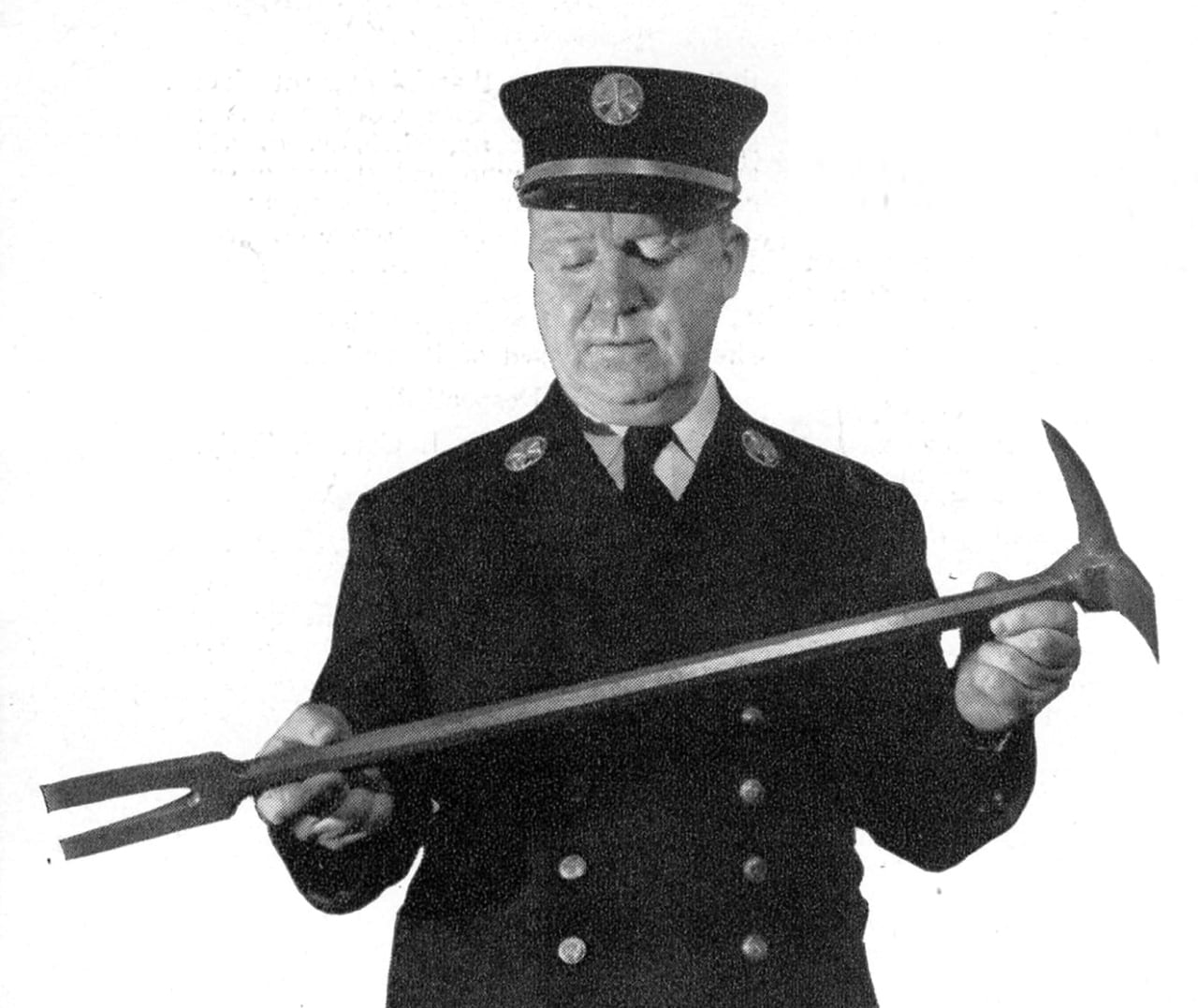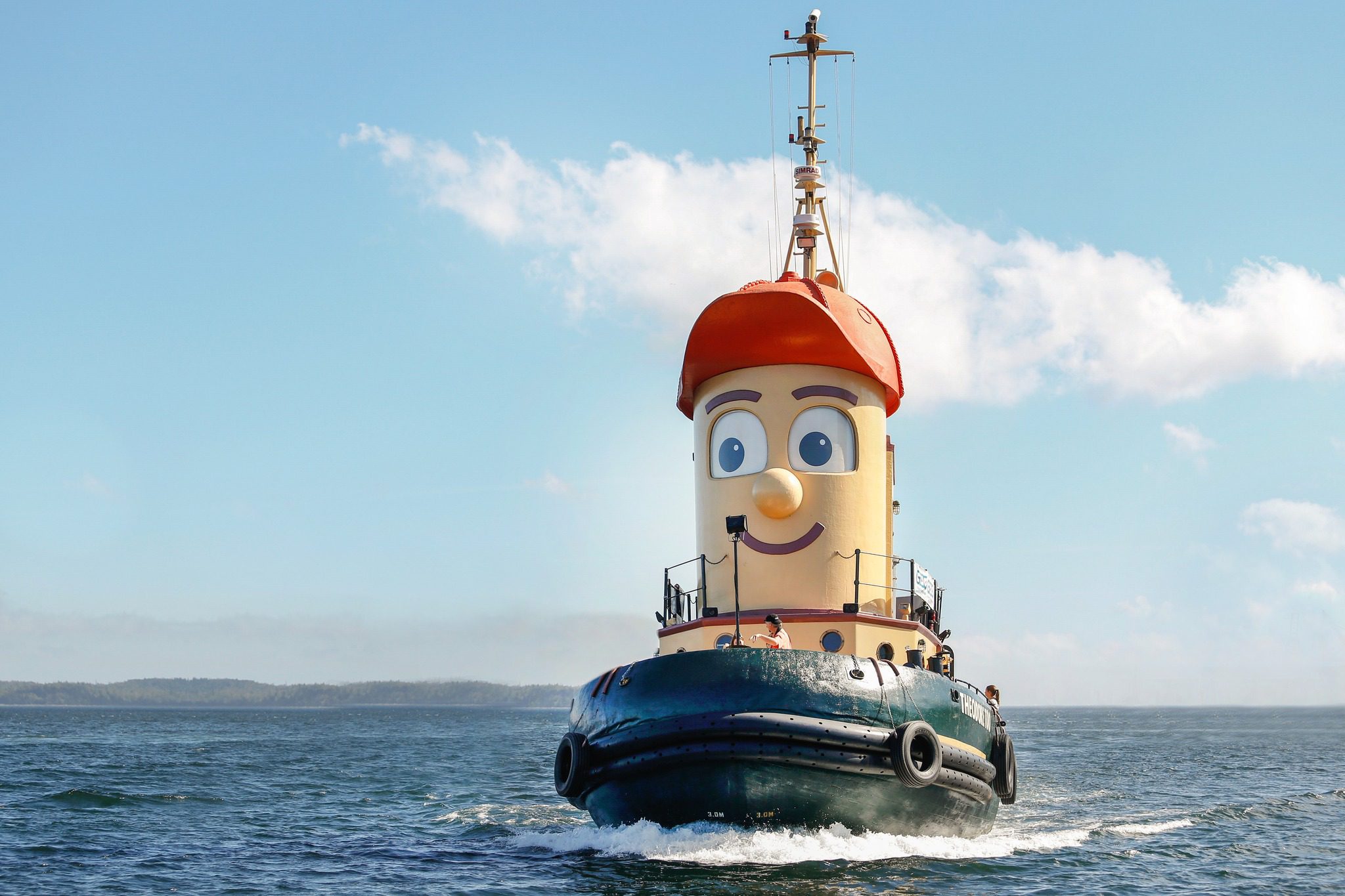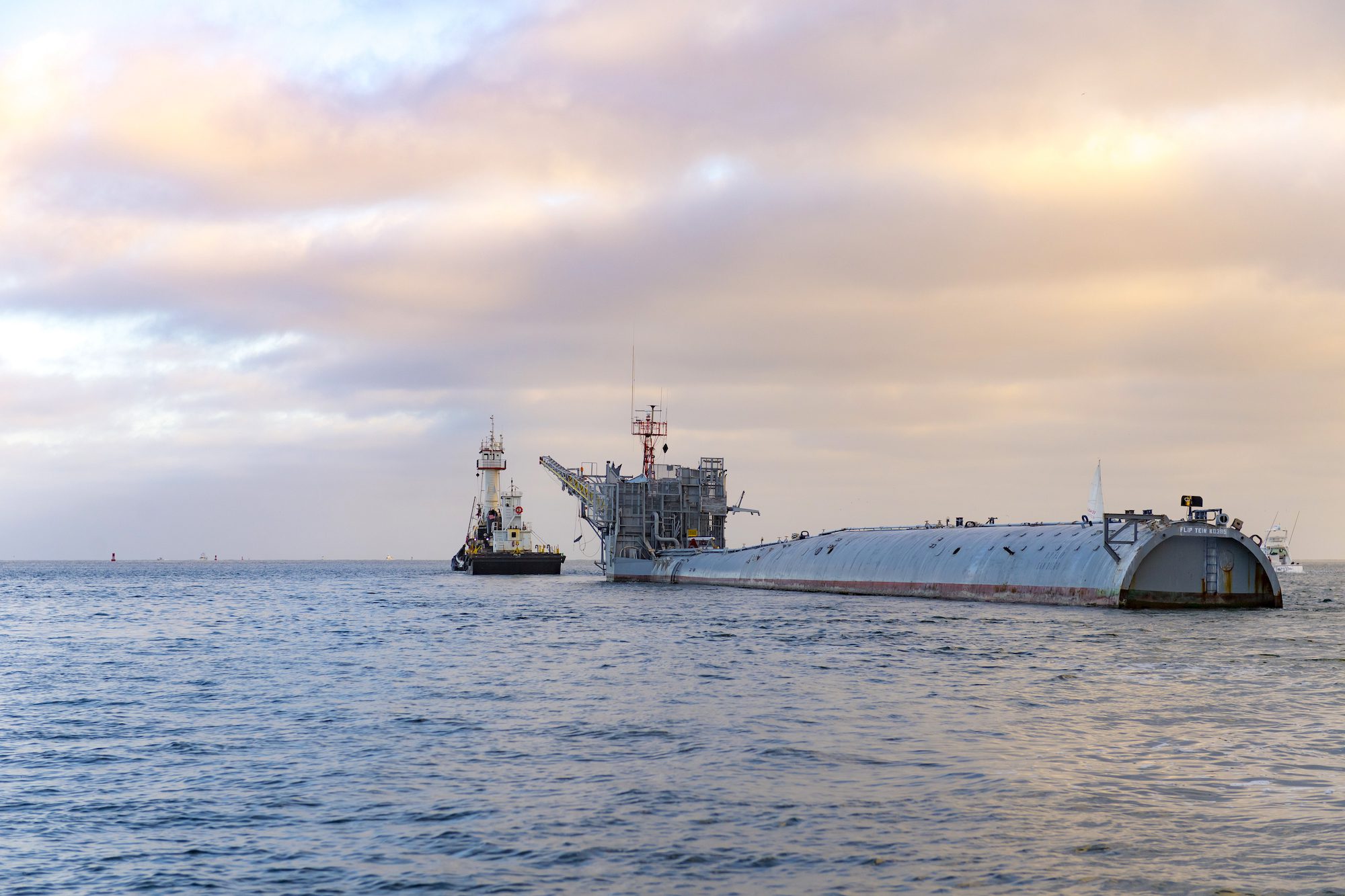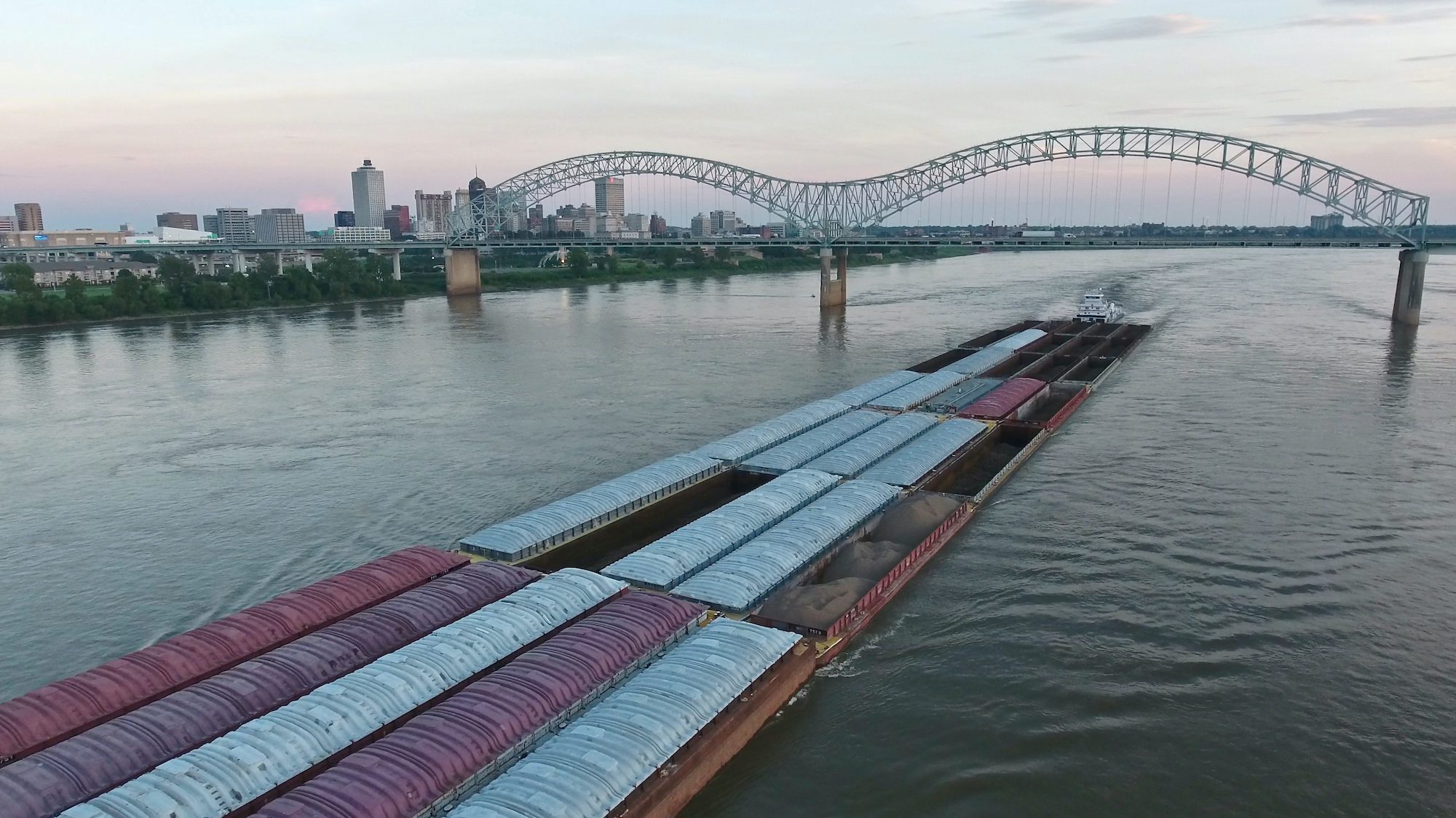FDNY Fire Chief Hugh Halligan with his groundbreaking invention.
EDITORIAL NOTE: Elements of this story have been fictionalized for brevity.
OP-ED By John Konrad (gCaptain) Those five words have special meaning. They motivate like no other. They ring for years in the sweat-soaked nightmares of any sailor who has ever heard them. They excite and calm. Words have power and meaning but few words have more meaning to sailors than these five. The first step required to rebuilding the US Merchant Marine is for a strong leader to pronounce these five words:
THIS IS NOT A DRILL
The Smoke-Filled Room
Not long ago I received an invitation from a man with a forgettable name, to meet in a random building, in a nondescript suburb of New York. I did not know this man. In my nearly 15 years running gCaptain I had never come across his name or his company and there didn’t seem to be a trace of him on LinkedIn or Google. Typically, I leave random invitations from unknown people unanswered, but this invitation piqued my interest because it was short, purported urgency, and the man claimed to be the best friend of a shipping magnate I knew well and trusted.
The address turned out to be the former headquarters of a very large and influential company which was abandoned a few decades ago after the company went bankrupt. It was abandoned of suits and ties but the sprawling campus and the building itself were immaculately groomed. I followed the directions to “just park outside” and parked my car in the immense circular driveway, walked into the building, and was immediately taken by the vast lobby undoubtedly designed by some talented modern architect whose name I should probably know. It had the slight must of disuse almost hidden by citrus scent of a fresh Florida orchard.
It was grand and disorienting.
Entering a glass elevator, I pressed the button for the “CEO suite” and, walking off, was met by a large man in his sixties or early seventies with wide shoulders, a chiseled face, and enormous hands that engulfed mine when we shook. His smile was infectious as he greeted me and escorted me through the doors of a modern glass wall, over a floor of glistening polished wood with an unpronounceable Brazilian name, past glass museum-quality displays with shipping artifacts, past a cedar cigar room, past a bar stocked with only single malt, past signed lithographic art, to a spartan office with a wide window, Persian rug, mahogany desk and a few museum-quality chairs. At this point only one thing was clear to me: this was the proverbial smoke-filled room where big deals get done in secrecy.
I sat on the chair closest to his desk.
“Tell me a story,” he said and I replied with a quizzical look. I was still disoriented by the building, the office, and the man. “Listen” he replied as he sat at his desk, glanced at the multiple screens of the Bloomberg terminal inlaid in his desk, then rose to sit on the front corner of his desk. “Our corner of the world,” he said in his bright deep voice, “the shipping world is failing. COVID19 is crippling supply lines, uncertainty has gripped the markets, crews are going to be stuck for months, and American shipping interests are an anemic fucking waste, a few US shipping companies are unlikely to survive COVID, MARAD is providing some leadership but Buzby is too focused on the Pentagon, which has problems of their own.”
He did not waste time getting to the root of the problem and he did not blame the Jones Act, Congress, unions, banks, or anything else that I’ve heard men in his position of money and wealth blame for the woes of American Shipping. He said “every fucking problem gCaptain writes about” – both internationally and domestically – was the result of one thing. He blamed it all on a “A total lack of fucking leadership.”
The shipping community needs a leader, he said. Further, he made clear that the leader could not be me, I am too controversial, and it could not be him, he was too old. He did not tell me who the leader should be except someone smart, young, and charismatic. He did not tell me anything else, instead he just made one simple request. “Tell me a story.”
What he wanted was a story he could use to recruit a leader. And story that would tell that leader what must be done first and foremost to “fix this sinking ship” to fix America’s merchant fleet.
“I don’t know what story to tell. I don’t know how to fix the world’s problems.” I said. “But I know what we, the US shipping industry, need to do first.”
“What is that?”
“We must sound the Alarm,” I said.
“Well, you are a ship captain.” He replied. “Tell me the story about a time you did just that.”
I did not have time to reflect or plan out a story, so I went to my earliest days of childhood and told a tale I knew by heart. Here is the story I told that day. Here is the story I hope inspires a leader to rise to lead this industry. A story that I already know is too long and unrelated but is what came from my heart when this man put me on the spot.
Here is the story I told.
The Great Hugh Halligan
In 1948 a New York City Fire Department (FDNY) Chief named Hugh Halligan invented a new tool that would go on to save millions of lives and would eventually become standard equipment carried aboard nearly every firetruck in the world. The tool – a thick hardened steel bar bookended with a wedge, an adze, and a claw designed to forcibly penetrate any material – looks like a medieval implement of destruction welded in bad intentions and wielded by mercenary knights in black armor. The Halligan Bar, as the device would be called, was crude, ugly, and highly effective. The tool was expensive because it was difficult to forge by hand but, despite the high cost, by 1949, Peter Clarke, the blacksmith Chief Halligan convinced to hammer and forge out the tool, was overwhelmed with orders as countless New York Fireman purchased the tool with cash.
The New York City Fire Department immediately recognized the utility of this tool but rejected Halligan’s offer to supply them to the department at cost. The city procurement process was mired in bureaucracy and legal minds worried more about the conflict of interest the city had in buying a life-saving device invented by one of its members than the lives it could save. Boston, however, did not have that concern, and soon purchased one for every fire company in the city.
Ignoring the department’s concerns and orders preventing its use, FDNY firefighters continued purchasing the tool from local blacksmiths, until – many years later – the city began purchasing Halligan Bars in bulk.
As a child growing up the son of a fireman in the Bronx I was fascinated by this tool in the same way some boys are obsessed with swords or guns. Like the guns and swords other boys fabricated from sticks and cardboard, a homemade Halligan Bar is a fun item to play with but serves no practical purpose in a home.
Why did my dad own one? What disaster could possibly befall our neighborhood that would require Dad to visit the garage to fetch this unusual tool?
In the two decades I lived at home I only witnessed Dad use the tool once; when a blizzard dropped many feet of snow on our street Dad pressed its claw into a hole in the street and lifted a man-hole. Then we shoveled our snow right into the sewer.
Dad’s own Halligan Bar was retired the day when New York City purchased these tools for his truck (today it sits in my basement, still admired but unused) yet the identical bars purchased by the city and stored in the starboard forward locker of his firetruck – Rescue 3 – he used daily and those bars, wielded by Dad and his brother firefighters, saved many lives and created stories of legend.
What does the Halligan Bar have to do with US Maritime Policy? Everything.
The fire aboard a large ship.
As a young Chief Mate aboard an American owned drillship in the Gulf Of Mexico I was in charge of all emergency and firefighting duties aboard ship. With more than ten dozen people aboard all focused-on drilling for highly explosive gas, I took this job seriously. Our company did too. The amount of firefighting gear aboard that ship far exceeded the regulatory requirements. We had some exotic tools too like thermal cameras, molten metal fire extinguishers, a helicopter jettison rig, and a few of those bright silver suits designed by NASA for aviation fires which were affectionately called “Silver Didos”.
But we had no Halligan Bars.
The ship had countless hazmat drums, steel doors, and heavy objects that would need to be pried, yanked, penetrated, and ripped open in an emergency but we did not have a single Halligan. So, I ordered three. Total price $871 or 0.001742 percent of the ship’s day rate. My order was denied. Like the New York City Fire Department, everyone was interested in the applicability of the “new” tool, but it wasn’t on the approved vendor list, a risk analysis hadn’t been performed, legal had not reviewed the case.
So, like my father before me, I bought three with cash from my wallet, had them sent to the ship, and place one in each emergency gear locker. Then all three disappeared. There turned out to be many uses for a Halligan tool aboard ship and they got “borrowed” and misplaced.
Because these Halligan Bars were essential safety gear, and because I purchased them with my own funds, finding them had become a personal project of mine. Many were questioned, signs were posted, announcements made but nobody could find the missing bars. Some claimed they had been “stolen by contractors”, others argued they had fallen overboard. Everyone agreed that we’d never see them again.
Six months later, on a hazy, hot, and humid summer day too close to the equator for anyone’s comfort, alarm bells sounded, and the PA squawked with the Captain’s voice, “This is the Captain. FIRE, FIRE, FIRE in the forward thruster. THIS IS NOT A DRILL, fire in the forward thruster.”
Within minutes two teams of crew members arrived on scene wearing fire gear that would soon be soaked in sweat. The hatch down into the thruster was fit over a metal shaft that had expanded in the heat. Nobody could open the hatch.
This is not the place for a sea story, so I won’t dive into the details of that fire. I will say that I ordered three members of the backup team to find the missing Halligan tools and, within 6 minutes, all three magically appeared on the scene.
How could 150 members look for an item for six months and never find it, then, within six minutes of hearing “THIS IS NOT A DRILL”, how did they find all three?
Today the US Maritime Industry is failing. As of August 2019, only 81 large privately owned US Flagged ships of 1,000 gross tons or more operate in international trade. 81 ships remain of what was once the largest fleet of commercial ships in the world. A fleet that delivered victory in two world wars.
So I say, “This is the Captain. EMERGENCY, EMERGENCY, EMERGENCY in the United States Merchant Marine. THIS IS NOT A DRILL.”
In the current climate, there is a lot of blame. The seamen blamed the mechanics for borrowing my Halligan Bars, the Mechanics Blamed the drillers, I blamed everyone. In today’s US Shipping industry sailors blame “greedy” shipowners, ship owners blame shipyard costs, everyone blames unions.
The truth is there are lots of people and organizations that deserve blame, myself included but… we can make no progress while fingers are being pointed, and we can make progress while everyone competes for larger shares of dwindling subsidies. To move forward it is critical that all stakeholders’ man an oar and pull together for the greater good. It is also necessary that we all pull towards a common objective.
Sounding the alarm is the first, most critical, step in rebuilding the American fleet.
Sounding the alarm accomplishes multiple critical objectives:
1) Nobody points fingers during a fire. Maybe after, but not during.
2) The alarm focuses everyone’s attention on the problems of NOW.
3) Everyone is willing to assume more risk – both personal and professional – during an emergency.
4) Proper emergency response leads to focus and clarity.
5) Emergencies fuel emotional positivity, love, and a common bond.
6) Emergencies suspend disbelief. They wake everyone up to the true extremity of the problem.
In most national strategies and papers of this kind the next few pages would be devoted to the current state of the industry. Facts would paint a grim picture, your emotional state would plummet, and the “fog of war” would make our objective unclear. Most of us would utter negative comments and discuss the impossibility of the task. These emotions and thoughts are not helpful. They need to be bypassed.
“You can always count on Americans to do the right thing – after they’ve tried everything else.” -Winston Churchill
You can read books like “The Abandoned Ocean”, reports from multi-lettered government agencies like MARAD and TRANSCOM, you can talk to ship owners and mariners…. or we can start trusting each other. Trusting that we’ve done our homework and joining together to learn more.
Let this sink in: WE HAVE TRIED EVERYTHING ELSE. Now is the time to do the right thing.
Don’t get depressed. American’s perform best as underdogs and no industry in this great nation is a bigger underdog than the Maritime Industry. We are Rocky Balboa on the ropes.
THIS IS NOT A DRILL
“I do not know who could lead the global industry or even who could organize and lead American shipping interests,” I told this man with the forgettable name on the highest floor of this strange building, in a nondescript suburb of New York. “But I DO know what he needs to say first.”
THIS IS NOT A DRILL
I SAY AGAIN.
THIS IS NOT A DRILL

 Join The Club
Join The Club











